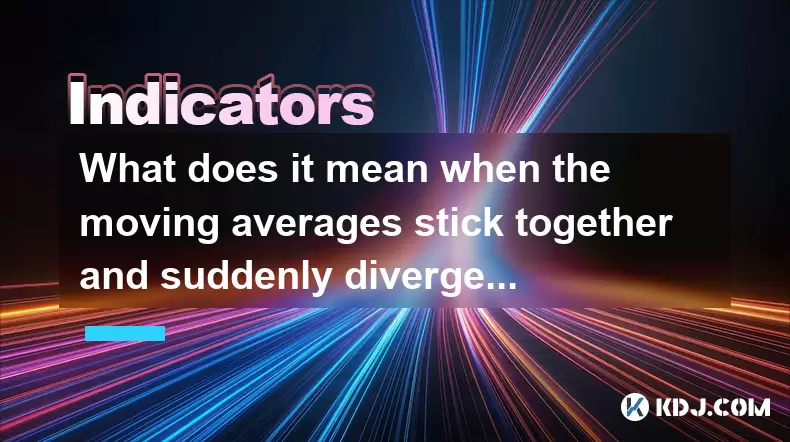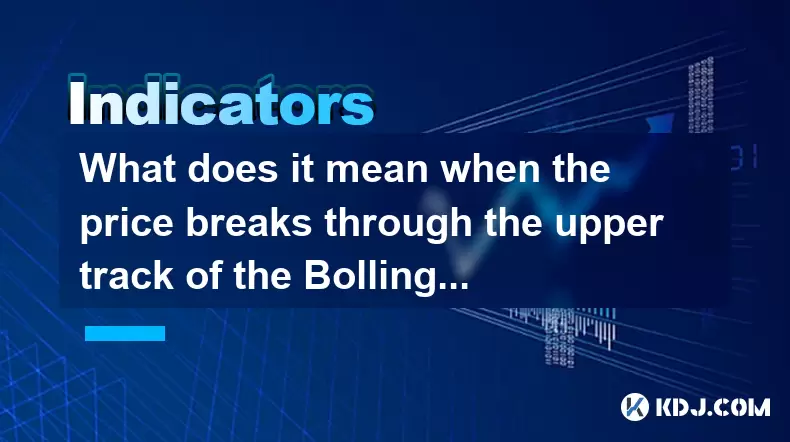-
 Bitcoin
Bitcoin $117500
-0.66% -
 Ethereum
Ethereum $3760
-1.24% -
 XRP
XRP $3.087
-2.54% -
 Tether USDt
Tether USDt $0.9999
-0.01% -
 BNB
BNB $803.6
-4.03% -
 Solana
Solana $180.3
-4.15% -
 USDC
USDC $0.9998
-0.01% -
 Dogecoin
Dogecoin $0.2218
-4.92% -
 TRON
TRON $0.3366
3.71% -
 Cardano
Cardano $0.7785
-3.73% -
 Hyperliquid
Hyperliquid $42.90
-4.75% -
 Sui
Sui $3.797
-7.45% -
 Stellar
Stellar $0.4165
-2.32% -
 Chainlink
Chainlink $17.65
-4.17% -
 Bitcoin Cash
Bitcoin Cash $561.0
-3.86% -
 Hedera
Hedera $0.2611
-4.54% -
 Avalanche
Avalanche $24.33
-7.02% -
 UNUS SED LEO
UNUS SED LEO $8.972
0.06% -
 Litecoin
Litecoin $107.6
-2.79% -
 Toncoin
Toncoin $3.254
-1.84% -
 Shiba Inu
Shiba Inu $0.00001306
-4.69% -
 Ethena USDe
Ethena USDe $1.001
0.00% -
 Uniswap
Uniswap $10.10
-4.83% -
 Polkadot
Polkadot $3.902
-4.63% -
 Monero
Monero $315.1
-2.57% -
 Dai
Dai $1.000
0.02% -
 Bitget Token
Bitget Token $4.499
-2.53% -
 Pepe
Pepe $0.00001145
-7.38% -
 Cronos
Cronos $0.1479
6.07% -
 Aave
Aave $281.3
-4.07%
What does it mean when the moving averages stick together and suddenly diverge upward?
When 50-day and 200-day moving averages converge then suddenly diverge upward on a crypto chart, it signals a potential bullish breakout, especially if confirmed by rising volume and price breaking resistance.
Jul 29, 2025 at 02:14 pm

Understanding Moving Averages in Cryptocurrency Trading
Moving averages are among the most widely used technical indicators in the cryptocurrency trading community. They help smooth out price data over a specified period, allowing traders to identify trends more clearly. The two most common types are the Simple Moving Average (SMA) and the Exponential Moving Average (EMA). When multiple moving averages—such as the 50-day and 200-day—are plotted on a price chart, their relative positions provide insight into market momentum and trend direction. A situation where these averages stick together for a period and then suddenly diverge upward is considered a significant technical signal.
What Does It Mean When Moving Averages Stick Together?
When moving averages converge or stick together, it typically indicates a period of consolidation or low volatility in the market. This often occurs after a prolonged sideways movement or during a correction phase following a strong trend. During this phase, the short-term and long-term averages are close to each other, reflecting minimal difference in average prices across different timeframes.
This convergence suggests that market participants are uncertain, and neither bulls nor bears are in control. In cryptocurrency markets, which are known for high volatility, such consolidation phases can last from several hours to multiple days depending on the timeframe. Traders watch these periods closely because they often precede strong directional moves. The tighter the grouping of the moving averages, the more significant the potential breakout when it occurs.
Significance of Sudden Upward Divergence
When moving averages that have been clustered suddenly diverge upward, it signals a potential bullish breakout. This divergence means that the short-term average (e.g., 50-day EMA) is rising faster than the long-term average (e.g., 200-day EMA), indicating increasing upward momentum. The separation reflects a shift in market sentiment, where buying pressure begins to dominate.
This pattern is especially meaningful when it occurs after a prolonged consolidation. In Bitcoin or Ethereum charts, such divergence often coincides with a surge in trading volume, confirming the strength of the breakout. The visual widening between the averages acts as a confirmation that the trend is gaining traction. Traders interpret this as a sign that the uptrend is likely to continue, at least in the short to medium term.
How to Identify and Confirm the Divergence Signal
To effectively use this signal, traders must follow a precise method to confirm the divergence and avoid false positives. The following steps outline the process:
- Apply multiple moving averages to the price chart—common combinations include the 50-day and 200-day EMAs or the 20-period and 50-period SMAs on lower timeframes.
- Observe the convergence phase where the lines are tightly grouped, ideally for at least 10–15 candlesticks, indicating consolidation.
- Watch for the short-term average to cross above the long-term average and begin accelerating upward.
- Check for increased trading volume during the divergence, which validates the move.
- Confirm with price action—ensure the asset’s price is breaking above key resistance levels or previous swing highs.
Using TradingView or similar platforms, traders can customize moving averages and apply volume indicators simultaneously. For example, setting the EMA(50) in blue and EMA(200) in red makes the divergence visually apparent when the blue line pulls away upward from the red.
Practical Example in a Cryptocurrency Chart
Consider a scenario on the daily chart of Binance Coin (BNB). For several weeks, the 50-day and 200-day EMAs run parallel and are nearly touching, indicating a consolidation phase between $280 and $310. During this time, price oscillates within a narrow range, and volume remains relatively low.
Suddenly, BNB price surges past $315 on high volume, closing significantly above the upper boundary of the range. At the same time, the 50-day EMA begins to rise steeply and separates from the 200-day EMA, forming a widening gap between the two lines. This upward divergence confirms a bullish momentum shift. Traders who recognize this pattern may enter long positions, placing stop-loss orders just below the recent consolidation zone, around $290.
The key here is not just the visual separation but the confluence of factors: price breaking resistance, rising volume, and the moving averages fanning out in an upward direction. This multi-layered confirmation reduces the risk of acting on a false signal.
Common Misinterpretations and How to Avoid Them
Not every divergence leads to a sustained trend. Some upward separations are short-lived and result in whipsaws or fake breakouts. To minimize risk:
- Avoid acting on divergence without volume confirmation. A spike in volume is essential to validate the move.
- Check higher timeframes. A divergence on a 4-hour chart might be part of a larger downtrend on the weekly chart.
- Use additional indicators such as the Relative Strength Index (RSI) or MACD to support the signal. For instance, if the MACD line crosses above the signal line at the same time as the moving averages diverge, the bullish case strengthens.
- Be cautious during major news events. Sudden price spikes due to rumors or exchange listings can create artificial divergence that reverses quickly.
Traders relying solely on moving average patterns without context may face losses. The combination of technical tools and market context is critical in cryptocurrency trading, where sentiment can shift rapidly.
Frequently Asked Questions
What timeframes are best for observing moving average divergence in crypto?
The daily and 4-hour charts are most effective for identifying reliable divergence patterns. Shorter timeframes like 15-minute charts generate too many false signals due to market noise, while weekly charts may delay entry. The daily chart balances signal quality and timeliness, especially for major cryptocurrencies.
Can moving average divergence occur in a downtrend?
Yes, but in that case, the divergence would be downward, with the short-term average falling faster than the long-term average. This indicates accelerating bearish momentum. The principle is the same, but the direction is inverted.
Should I use simple or exponential moving averages for this strategy?
Exponential Moving Averages (EMAs) are generally preferred because they give more weight to recent prices, making them more responsive to new trends. This sensitivity helps detect divergence earlier than SMAs, which treat all periods equally.
How long does the upward divergence typically last after it starts?
There is no fixed duration. Some divergences last for several weeks, especially during strong bull runs, while others fade within days. Monitoring volume and price behavior after the divergence begins helps determine whether the trend is sustainable.
Disclaimer:info@kdj.com
The information provided is not trading advice. kdj.com does not assume any responsibility for any investments made based on the information provided in this article. Cryptocurrencies are highly volatile and it is highly recommended that you invest with caution after thorough research!
If you believe that the content used on this website infringes your copyright, please contact us immediately (info@kdj.com) and we will delete it promptly.
- Bitcoin Price Drop: Navigating the Dip with Corporate Strategies
- 2025-07-30 07:30:12
- BNB's Bullish Cycle: ChatGPT Weighs In on the Future
- 2025-07-30 06:50:12
- XRP's Wild Ride: Open Interest, Price Crash Fears, and What's Next
- 2025-07-30 07:50:12
- SEC Greenlights In-Kind Creations: A Game Changer for Bitcoin ETPs?
- 2025-07-30 07:50:12
- Arbitrum (ARB) Price Prediction: Navigating the Ups and Downs of the Best ETH Eco
- 2025-07-30 06:50:12
- Ethereum, Ruvi AI, Presale: The Next Big Thing in Crypto?
- 2025-07-30 07:30:12
Related knowledge

What does it mean when the EMA combination crosses upward for the first time after sideways trading?
Jul 28,2025 at 03:43pm
Understanding the EMA and Its Role in Technical AnalysisThe Exponential Moving Average (EMA) is a widely used technical indicator in cryptocurrency tr...

What does it mean when the price breaks through the upper track of the Bollinger Band but the RSI is overbought?
Jul 30,2025 at 03:35am
Understanding Bollinger Bands and Their Upper TrackBollinger Bands are a widely used technical analysis tool developed by John Bollinger. They consist...

What signal does the ROC send when it rises rapidly from a low level and breaks through the zero axis?
Jul 27,2025 at 10:15am
Understanding the Rate of Change (ROC) IndicatorThe Rate of Change (ROC) is a momentum-based oscillator used in technical analysis to measure the perc...

What does it mean when the moving averages are glued together and a gap appears?
Jul 29,2025 at 07:49pm
Understanding Moving Averages in Cryptocurrency TradingMoving averages are among the most widely used technical indicators in the cryptocurrency tradi...

What does it mean when TEMA breaks through the long-term downward trend line?
Jul 29,2025 at 02:50pm
Understanding the Role of Smart Contracts in Decentralized Finance (DeFi)Smart contracts are self-executing agreements with the terms of the agreement...

What does it mean when the price breaks through the double bottom neckline and the moving averages are arranged in a bullish pattern?
Jul 28,2025 at 10:57am
Understanding the Double Bottom PatternThe double bottom is a widely recognized reversal chart pattern in technical analysis, particularly within the ...

What does it mean when the EMA combination crosses upward for the first time after sideways trading?
Jul 28,2025 at 03:43pm
Understanding the EMA and Its Role in Technical AnalysisThe Exponential Moving Average (EMA) is a widely used technical indicator in cryptocurrency tr...

What does it mean when the price breaks through the upper track of the Bollinger Band but the RSI is overbought?
Jul 30,2025 at 03:35am
Understanding Bollinger Bands and Their Upper TrackBollinger Bands are a widely used technical analysis tool developed by John Bollinger. They consist...

What signal does the ROC send when it rises rapidly from a low level and breaks through the zero axis?
Jul 27,2025 at 10:15am
Understanding the Rate of Change (ROC) IndicatorThe Rate of Change (ROC) is a momentum-based oscillator used in technical analysis to measure the perc...

What does it mean when the moving averages are glued together and a gap appears?
Jul 29,2025 at 07:49pm
Understanding Moving Averages in Cryptocurrency TradingMoving averages are among the most widely used technical indicators in the cryptocurrency tradi...

What does it mean when TEMA breaks through the long-term downward trend line?
Jul 29,2025 at 02:50pm
Understanding the Role of Smart Contracts in Decentralized Finance (DeFi)Smart contracts are self-executing agreements with the terms of the agreement...

What does it mean when the price breaks through the double bottom neckline and the moving averages are arranged in a bullish pattern?
Jul 28,2025 at 10:57am
Understanding the Double Bottom PatternThe double bottom is a widely recognized reversal chart pattern in technical analysis, particularly within the ...
See all articles

























































































